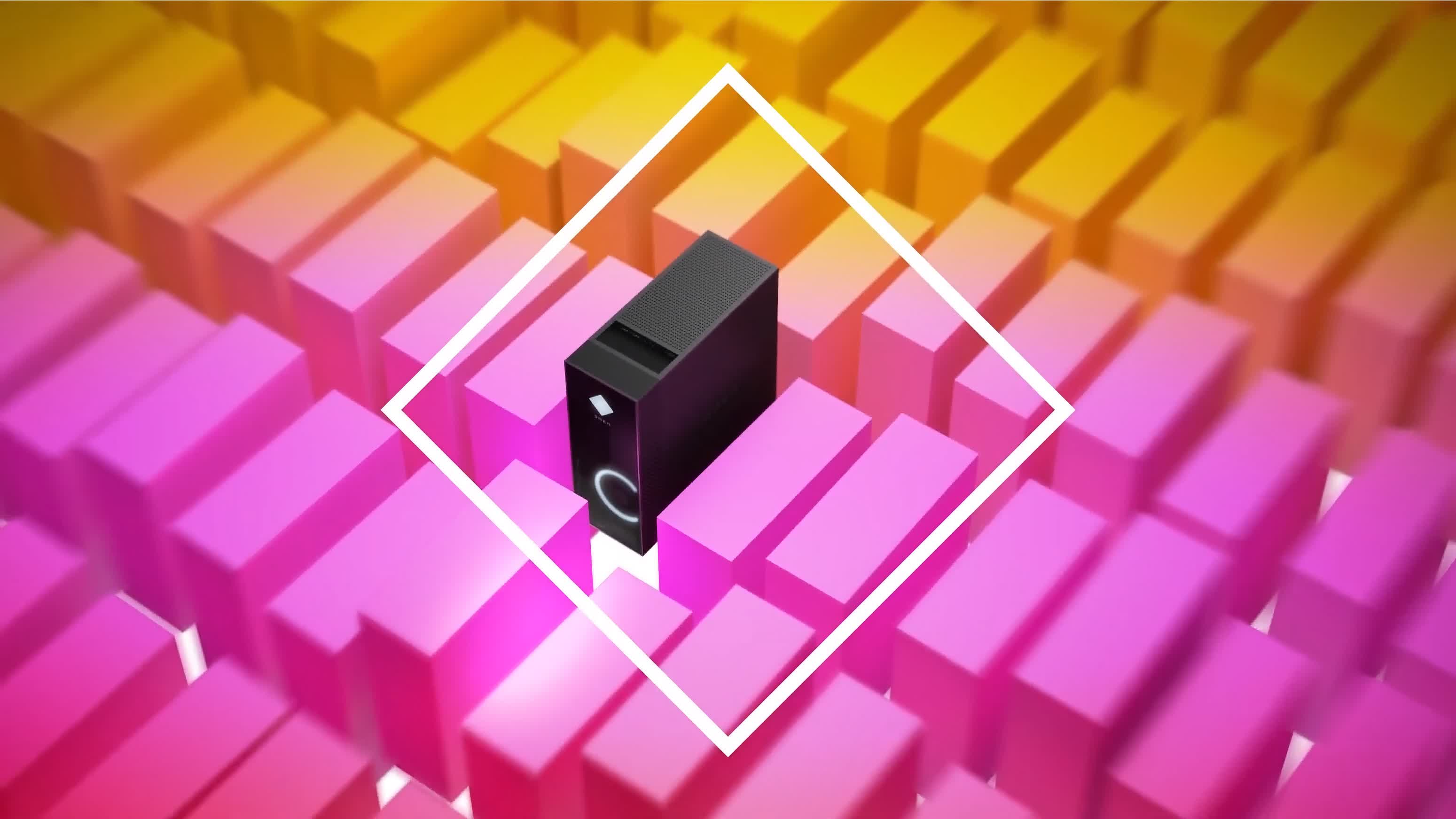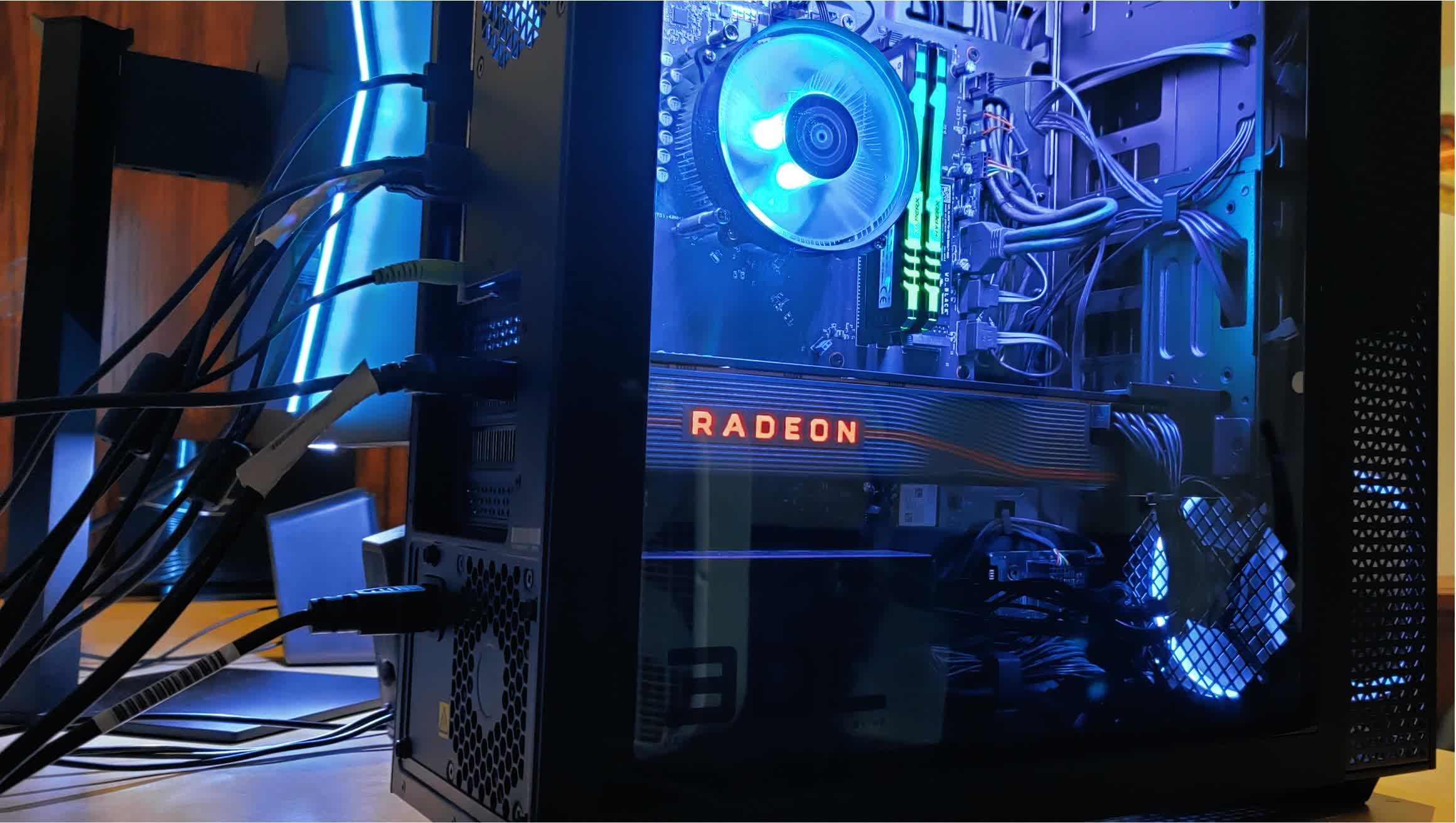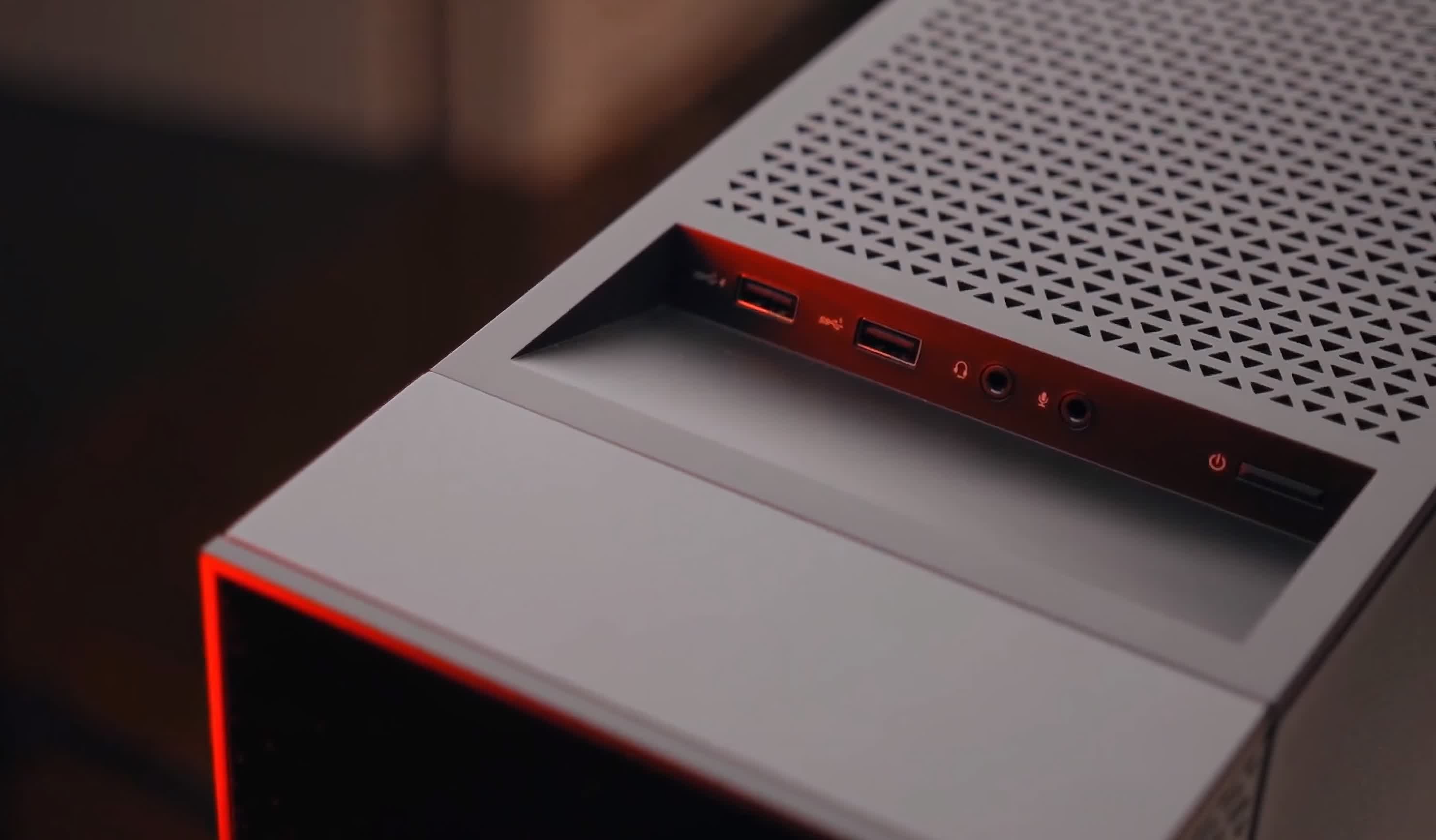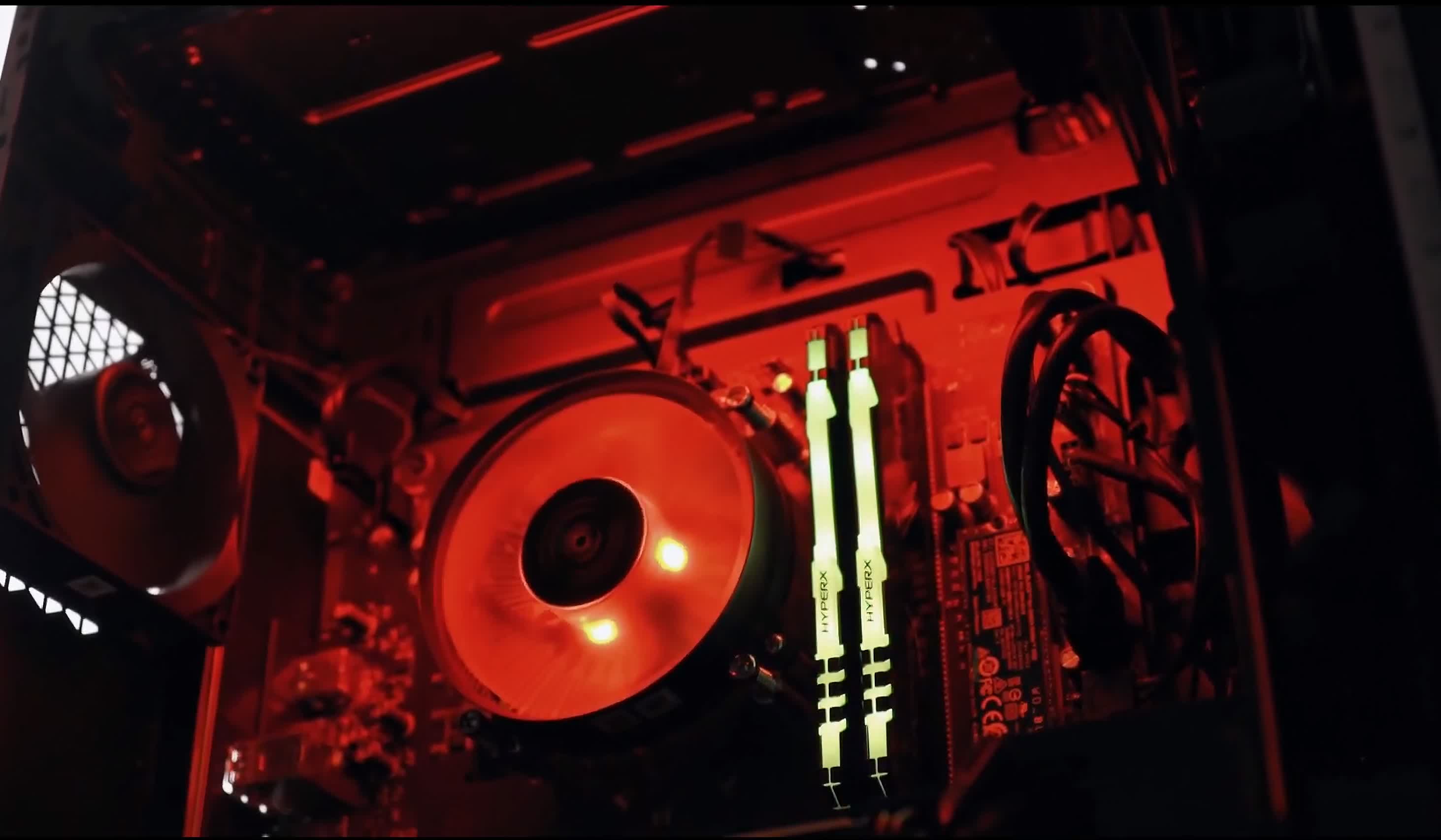HP's Omen gaming desktops are some of the most well-known pre-built gaming machines on the market, and they have been for many years now, since the days when Omen was still VoodooPC.
Though the VoodooPC brand was retired in 2014, it has lived on as a division of HP, who continued to use Voodoo's distinct tribal mask logo until just recently. The new Omen logo debuted months ago when HP reworked the brand. That overhaul brought new product additions and a more mature look – we recently checked out the Omen 15 Ryzen gaming laptop – and on the desktop side we have Omen's latest systems: the 30L and the 25L.
Over the past few weeks I've been using the HP Omen 30L as my daily driver desktop alongside the HP Omen 27i gaming monitor (1440p 165Hz). The Omen 30L configuration we received includes an AMD Radeon 5700 XT graphics card, HyperX 16GB DDR4 RAM clocked at 3200MHz, and a Ryzen 5 3600, our pick for best value CPU. HP also tossed in a WD Black 256GB NVMe SSD and a 1TB 7200RPM HDD for all our storage needs (with space for two extra 2.5-inch drives), plus all the cooling, PSU and case design is by Cooler Master.
For reference, that part list mostly lines up with the Omen 30L's base configuration that sells for $999, except for the RAM which is down to 8GB by default. This should be sufficient for most, but a bit on the low side given the demands of next-generation gaming, so we'd probably recommend upping that to 16GB at the first opportunity.
Design
Aesthetically, the Omen 30L is a beautiful machine. HP's custom chassis made by Cooler Master combines metal panels with tempered glass for a sleek, minimalist look. It's not as flashy as something you might see from Alienware, but that's hardly a bad thing – in some situations, less is more, and I believe the 30L is an excellent example of that.
When the system is idle, a vibrant, white diamond-shaped LED (the new Omen logo) fades in and out behind the all-glass front panel. Etched into the glass below the logo is the always-visible "Omen" text. It would've been nice if the text was also LED-lit, but an etching gets the job done as well.
When you turn the system on from sleep, the front panel's LED fan whirrs to life, and the Omen logo stops flashing, switching to a steady glow. In a dark room, the lights are quite striking.
The Omen 30L's streamlined look continues when you open up the tempered glass side panel. Aside from the RGB RAM and case fan, there aren't many flashy lights here. Some might be disappointed by this, but personally, I don't tend to look at the left side of my system that much due to my desk layout.
After my time with the Omen 30L, I only have two complaints with the PC's design – one was a bit more serious, but the other is more of a personal nitpick. We'll start with the former: when I booted up the 30L for the first time and navigated to HP's Omen Command Center software (I'll discuss that more in a few moments), I started adjusting the colors of the system's light-equipped parts – the front panel LEDs, the CPU fan LED, and of course, the RGB RAM.
I quickly realized that the colors were a bit off. Every LED, except the logo, wasn't quite what I set it to – when I switched them to orange, they were yellow, and when I changed them to red, they looked pink. This is arguably a minor problem, but given how rock-solid the rest of the 30L's design was, it was a bit jarring.
I'm not sure whether something was wrong with the LEDs or if the issue is software-related. In either case, I simply decided to set all the lights to white to avoid the hassle. Unfortunate, but not dealbreaking.
The second, less dramatic complaint, I have relates to the front USB ports on the 30L. It's great having them there, but instead of facing forward or sitting on a flat surface on top of the machine, the I/O section (and the power button) is located in a large, inset groove in the top panel. Some might prefer this aesthetically, but the design made it easier for dust and grime to build up in my experience.
Out of the Box Impressions
After carefully inspecting each of the 30L's primary components during the setup process, I found that they were all firmly secured in place out of the box. It's not uncommon for, say, a video card connector or RAM stick to come loose during shipping (sometimes due to poor QA on the builder's part), so I was pleased to see that wasn't something I'd need to worry about.
HP's system builders also did a fantastic job with cable management. Everything from the case LED cables to the GPU power cord is neatly routed behind the motherboard. Compared to the spaghetti-like mess that many PC building novices (including myself, once upon a time) wind up with when they finish putting together their first gaming rig, it doesn't get much better than this.
After plugging in the machine using the included power cable (running from a Cooler Master 500W power supply, which was a bit lower than I'd like), I was able to get up and running right away. Windows was fully updated and the latest Radeon graphics drivers were already installed.
Sadly, the Omen 30L comes with the usual load of bloatware that we tend to see in new PCs: McAfee, an Office 365 trial, and plenty of HP's own apps and software. Fortunately, uninstalling all of those programs took less than 10 minutes, and one of them, the aforementioned Omen Command Center, was actually quite useful.
The program is nicely laid out and includes a few nifty features. For example, you can change and sync up the lighting for all your RGB-equipped devices, or test out HP's game streaming feature, Remote Play (it works similarly to the Steam function with the same name).
It also let me tweak the response time and picture mode of the HP Omen 27i gaming monitor within the software, though further adjustments still needed to be made via the panel's on-screen display. The Command Center has a few extra services that we ignored, such as Omen Rewards and Coaching, but users with an HP account might find them compelling.
Connectivity
Modern systems demand modern connectivity solutions, and the Omen 30L won't disappoint the average user there. The top panel's I/O port array consists of 2x USB 3.2 Gen 1x1 Type-A ports, a microphone jack, and one headphone/mic combo port.
Circling around to the rear of the 30L, we get 1x USB Type-C (10Gbps) port, 1x USB 3.2 Gen 2x1 port, and four additional USB 3.2 Gen 1x1 ports. There's also the usual audio in/out jacks, an RJ-45 slot, and a port for external microphones.
All in all, that set of ports should be more than enough to satisfy the average gamer, and it's definitely nice to see support for USB Type-C here. Briefly touching on wireless technology, the 30L has built-in Bluetooth, as well as Intel Wi-Fi 6 AX201, and Realtek Wi-Fi 5.
Build Quality
At 6.5 x 15.53 x 17.05 inches and about 28.5 pounds, the Omen 30L doesn't differ too much from competing machines in the size or weight department. However, as noted previously, it is composed almost entirely out of metal (except for its four plastic feet), which contributes to most of its weight and gives it a nice, sturdy feel. Even when applying intense pressure to the 30L's rear panel, I wasn't able to warp it much at all. The cooling grills (located to the left and right of the front-facing glass panel) flex a bit more, but not to a concerning degree.
To some extent, build quality excellence is more of a nice-to-have than a critical feature in a PC chassis. After all, you probably aren't going to be dropping or knocking over a full-sized tower anytime soon, and if you do, you'll have other things to worry about besides mere case damage.
Still, when you're shelling out $1,000 or more for a machine like this, you want something that feels like it's going to last a while, and the 30L certainly fits the bill there.
In a way, the 30L's excellent construction wound up being more of a downside than upside. When I attempted to remove the back panel of the system's chassis to inspect HP's cable management, I realized I couldn't – not easily, anyhow. There were no thumbscrews, no latches, and no grips that allowed me to slide the panel off. It was firmly rooted in place.
After a bit of research, and stumbling upon a support video from HP, I discovered that you first need to remove a special retaining screw inside the case before taking off the back panel. That's a cumbersome design decision that might make it a bit more challenging to upgrade the PC down the line.
Since even casual PC gamers will probably want to replace the occasional part over the (hopefully) many years they'd have a machine like the 30L, the process should be as simple as possible. Still, a small issue in the grand scheme of things, and one that's easily circumvented with a quick Google search and a bit of extra elbow grease.
As with most pre-built systems, HP saw fit to include a basic mouse and keyboard with the 30L. Unfortunately, "basic" is a generous way to describe them. The keyboard has flat, laptop-style keys, which some might like but I find them less than ideal for typing or gaming. Perhaps that's just me used to fancier mechanical keyboards. The mouse is also a simple three-button affair, and its standard one-size-fits-all design was nothing to write home about.
Pre-built machines seldom ship with top-of-the-line gaming peripherals unless you already pay for them in the overall package. Most serious PC gamers buy the rigs for the chassis and internals and discard the included mouse-and-keyboard kits. After all, decent yet affordable gaming gear is relatively easy to come by these days. Companies like HP are aware of this, so it's understandable that it chose to funnel its resources toward more essential parts of the machine here. If HP had to cut costs somewhere, I'm glad they did it here and not in another more critical area of the 30L.
What's to Like
For $999, I think the Omen 30L is a fantastic buy. Without factoring in the cost of the case, power supply, Windows 10, or the included basic peripherals, you will be spending that amount for a similarly-specced, custom-built machine. Add those missing pieces to the equation and you'll spend about $200 more than buying pre-built from HP. In other words, value is pretty good on the Omen.
If you're in the market for a complete gaming system with reasonably modern hardware and the ability to tackle new games with ease, you can't go wrong with the 30L. Naturally, if you're not happy with the baseline hardware configuration and have extra cash to burn, you can always upgrade the components during the checkout process. However you should note we're in the middle of a transition and by the end of the year new CPUs and GPUs will have arrived, especially on the high-end sector.
For a mainstream-priced machine though, the Radeon RX 5700 XT is a particularly good GPU pick, and the price seems to be right for this Omen build. By year's end, we wouldn't be surprised if HP upgraded the same Omen chassis to be equipped with Zen 3 CPUs and GeForce RTX 3000 series GPUs, but those will be more expensive, of course. If you have storage concerns, the included NVMe capacity can also be increased to a maximum of 2TB.
The Omen 30L is not without its problems, of course. A 500W power supply is likely not going to cut it with power-hungry monster GPUs, and the strange LED lightning issues I had with my review unit's are not ones I'd wish on paying customers.
Ultimately though, I don't think any of those small issues detract from the Omen 30L's overall value proposition. If you run into any issues, you can always call up HP's support line for assistance, and you're covered by a 1-year limited hardware warranty should more serious, RMA-worthy system failures pop up.
Shopping Shortcuts
- HP Omen 30L on HP.com
- HP Omen 27i gaming monitor (1440p 165Hz) on HP.com










